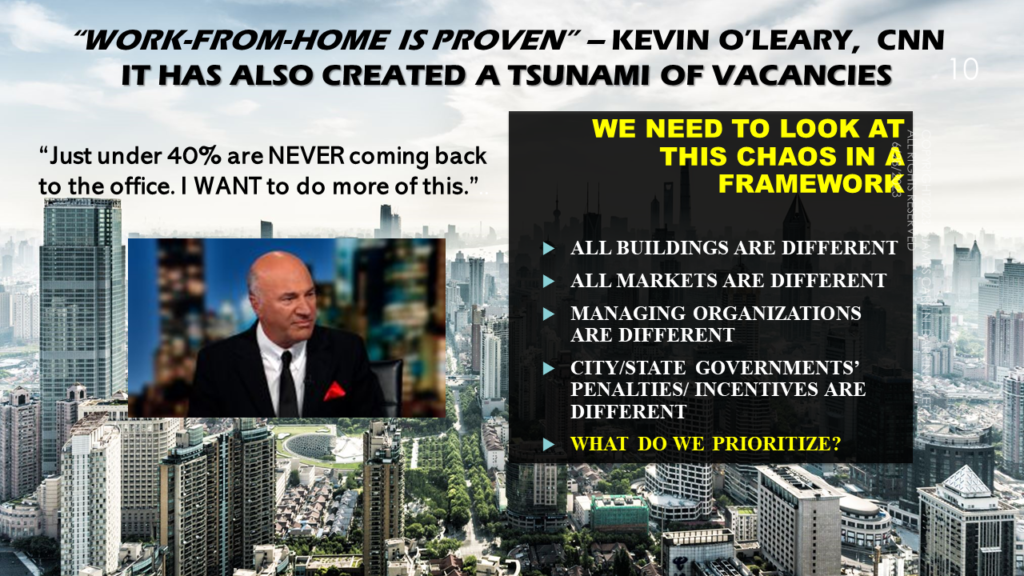There is so much talk about cities making some big transformation into the “City of the Future” and becoming Smart Cities, but all of it has been talked about. You cannot have a Smart City with Dumb Buildings, especially now that more people work from home. Most downtown office buildings are technologically obsolete. Some owners of businesses are becoming more aware of this, and they have been shrinking their demand for downtown office space since 2020. Kevin O’Leary, of Shark Tank fame. is only one of many who own businesses that are taking a second look at what they need when it comes to office space.

Most owners and property management firms in commercial real estate have been getting by with buildings that have been technologically obsolete for years, but now with more companies opting to have part of their workforce work from home, the demand for office space is shrinking. Those companies that are still looking for space want to make sure that office space can support mission critical applications. Most buildings were not designed for that.
Corporate tenants are looking to shrink their footprint in commercial office space and the resultant market is the “reverse of Musical Chairs”. More and more space is becoming available as there is less and less demand.” – James Carlini
What do Mission Critical applications have to do with corporate site selection? If a building or a business campus does not have redundant power coming into it or redundant broadband connectivity coming into it, it cannot support any mission-critical application a company may have in its enterprise operations. There cannot be any single point of failure in the intelligent infrastructure that supports that application. That means one connection to one power company’s substation is insufficient. Neither is a single connection to a central office. You need to have redundant feeds to both power and broadband and those feeds must have diverse routing. Diverse routing means not coming in on the same path or in the same conduit.
With that criteria, about 97% of the office buildings in most major downtown areas and business campuses in suburban areas are technologically obsolete. They were all designed to have a single connection running to one substation on the power grid or one central office in the communications network to support the facility. That was a good rule of thumb back in the horse-and-buggy days, but we are well beyond that, and corporate applications are so critical that one out of three are deemed mission-critical. In many corporations, that number is increasing to one out of every two mission-critical applications.
With more space available, corporate tenants will opt for updated office space to support their new applications. Technologically obsolete buildings will not lease up as fast, or in some cities, not at all. Some Class A buildings could quickly turn into Class B buildings because they cannot support mission-critical applications. Becoming a building that can support mission-critical applications will be a higher priority than adding other types of amenities sold into the market today.
The bottom line is that smart Cities do not have Dumb Buildings, and a dumb building is any building still designed with obsolete rules of thumb that do not have redundancy and resiliency incorporated into the building’s infrastructure. Many buildings can be retrofitted to have dual access points for power and broadband connectivity. Still, if they cannot, they will continue to lose occupancy and eventually be not considered corporate tenants.
Property management firms, as well as owners, should be reviewing their portfolios and figuring out what they want to do with each building in each different geographic area they are in. Many solutions can be applied, but it is not a “one-size-fits-all” type of solution. Adding capabilities like redundant power should not be viewed as a new “cost of doing business.” They should be viewed as investments that will pay off because the buildings will become marketable again in this post-pandemic economy.


